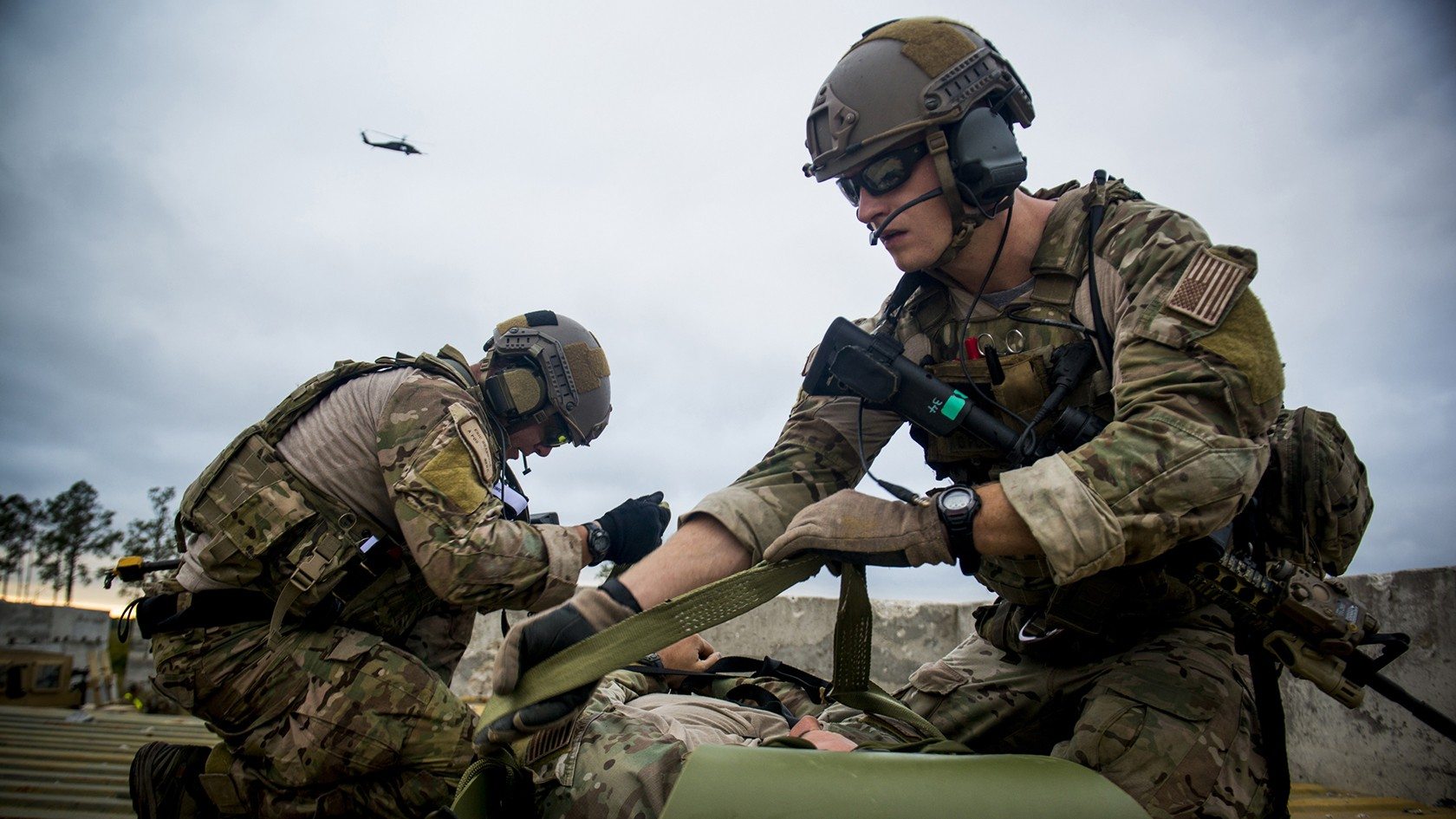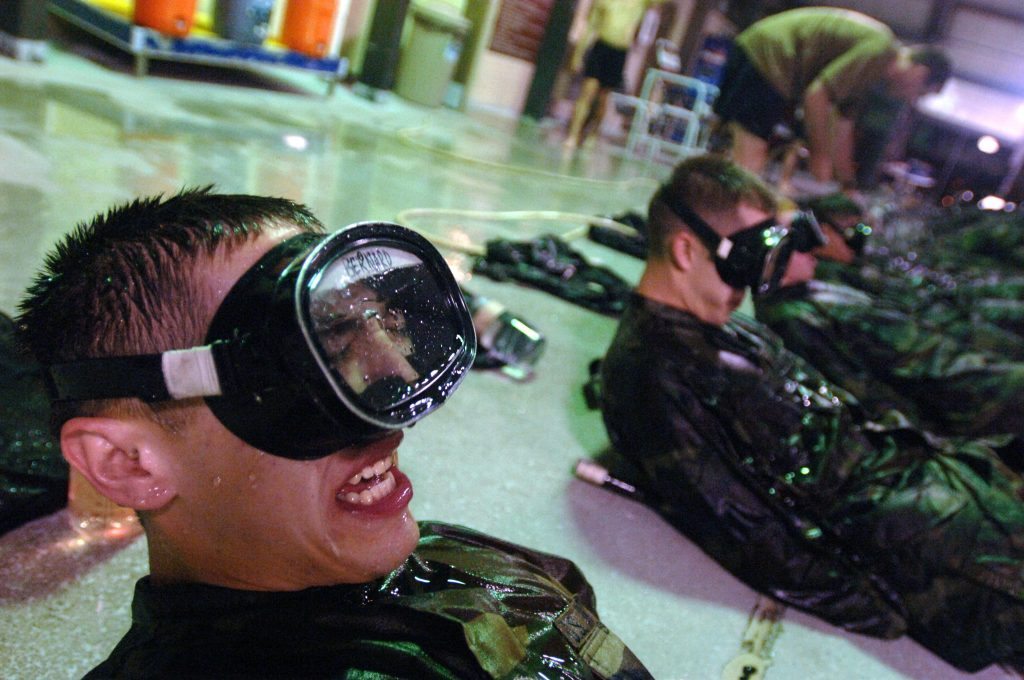by Donald Tamm
MSgt Pope was one of our Pararescue Indoc cadre. He created this track workout, which I copied from the Special Tactics forum in 2008, but was created well before my time. The Special Tactics writer roughly stated Pope developed the workout to keep Indoc grads in shape. The original workout was expansive, which I have left out of this one, and so you have a short yet effective workout here. This track workout, however, will make you fast. I have trained many young men, and one in particular, prepare for Air Force Indoc. I cannot take credit for the workout. Clearly I have been impressed with it as it is effective and I continue to use it. There are many workouts out there to stress the body but this one has consistently given great results.
The below information comes from Military. com. To become a member of the Air Force Special Tactics Team – Pararescueman, Combat Control Technician, or Special Ops Weatherman – you must be male, a proficient swimmer, and meet the physical standards of at least 100 points on the Physical Ability and Stamina Test (PAST). This job is open to officer and enlisted airmen. Here are the specific minimums to becoming a PJ and Combat Control tech as of June 1, 2011:
PJ PAST
– 2 x 25 meter underwater (Pass/Fail, 3 min between each) with 10 min rest
– 500 meter swim (freestyle, breaststroke, sidestroke), max time 10 min 07 sec with 30 min rest
– 1.5 mile run, max time 9 min 47 sec with 10 min rest
– Pull ups in 1 min, 10 x minimum reps with 3 min rest
– Sit ups in 2 min, 54 x minimum reps with 3 min rest
– Push ups in 2 min, 52 x minimum reps with 3 min rest
NOTE: The PAST requirements are designed to test for a minimum fitness level for entry into the CCT/SOWT/PJ training pipeline. CCT/PJ candidates should continue to train throughout their cross-training application and the recruiting process, to exceed these minimums in order to enhance their chances of success.
2 x 25 Meter Underwater Swim: Provide the member 3-minutes of rest between underwaters. If members surface or break the water surface during any portion of the swim, the test will be stopped and considered a failure. Swimsuits and swim goggles/scuba mask are the only equipment items allowed. After completion of the underwater allow a 10 minute rest before next event.
500 Meter Surface Swim: This swim is conducted using the freestyle, breaststroke or sidestroke. The swim is continuous (non-stop). If a member stops any time during the swim, the test will be stopped and considered a failure for the entire PAST. Swimsuit and goggles/scuba mask are the only equipment items allowed. After completion of the swim, allow a 30-minute rest prior to the next event.
1.5 Mile Run: Physical training (PT) clothes and good running shoes are the only required items. The run must be continuous (non-stop). If a member stops anytime during this run, the test will be stopped and considered a failure. Members will be given a 10-minute break prior to the next event. Test should be conducted on a measured running track.
Calisthenics: Four calisthenics exercises are evaluated, each with specific time parameters and specific exercise form mechanics. All members will exercise to either muscle failure or time completion, whichever occurs first. The intent is to have members do as many “good form” repetitions in the time allotted or when muscle failure is reached. Allow a 3-minute rest between each calisthenics exercise.
NOTE: Exercise form is strictly enforced during the PAST and in the training pipeline. Those repetitions done without proper form will not be counted and be to the members disadvantage.
Pull-ups: Pull-ups are a two-count exercise. Starting position is hanging from a bar, palms facing away from the candidate with no bend in elbows. Hand spread is approximately shoulder width apart. Count one; pull the body up until the Adam’s apple clears the top of the bar. Count two; return to starting position. Legs are allowed to bend, but must not be kicked or manipulated to aid upward movement. If the candidate falls off, stops, or releases the bar, the exercise is terminated.
Sit-ups: Sit-ups are a two-count exercise. Starting position is back flat on the surface, fingers interlocked behind the head, head off the surface, and knees bent at approximately a 90-degree angle. Another indivi dual may hold the individual’s feet during the exercise. Count one; sit up so that the shoulders are directly above the hip/pelvis area or 90 degrees to surface. Count two; return to the starting position. The exercise is continuous. If the member stops, the exercise is terminated. If the member’s buttocks rise from the surface or his fingers are not interlocked behind his head during the repetition, the repetition is not counted.
Push-ups: Push-ups are a two-count exercise. Starting position is hands, shoulder width apart, with arms straight and directly below the chest on the surface; the legs are extended, back and legs remain straight. Count one; lower the chest until the elbows are bent at a 90-degree or lower angle. Count two; return to the starting position. The only authorized rest position is the starting position. If the knees touch the ground the exercise is terminated. The member will not raise his buttocks in the air, sag his middle to the surface, or raise any hand or foot from their starting position. If a hand or foot is raised, the exercise is terminated.
The student I trained went from miserably failing the PAST test to smoking it at a 6:00 minute pace. He originally could only run it at an 8:00 mile pace and was stuck before he came to me for help. I coached him in other aspects of the PAST requirements but running is where he struggled and eventually improved greatly.


